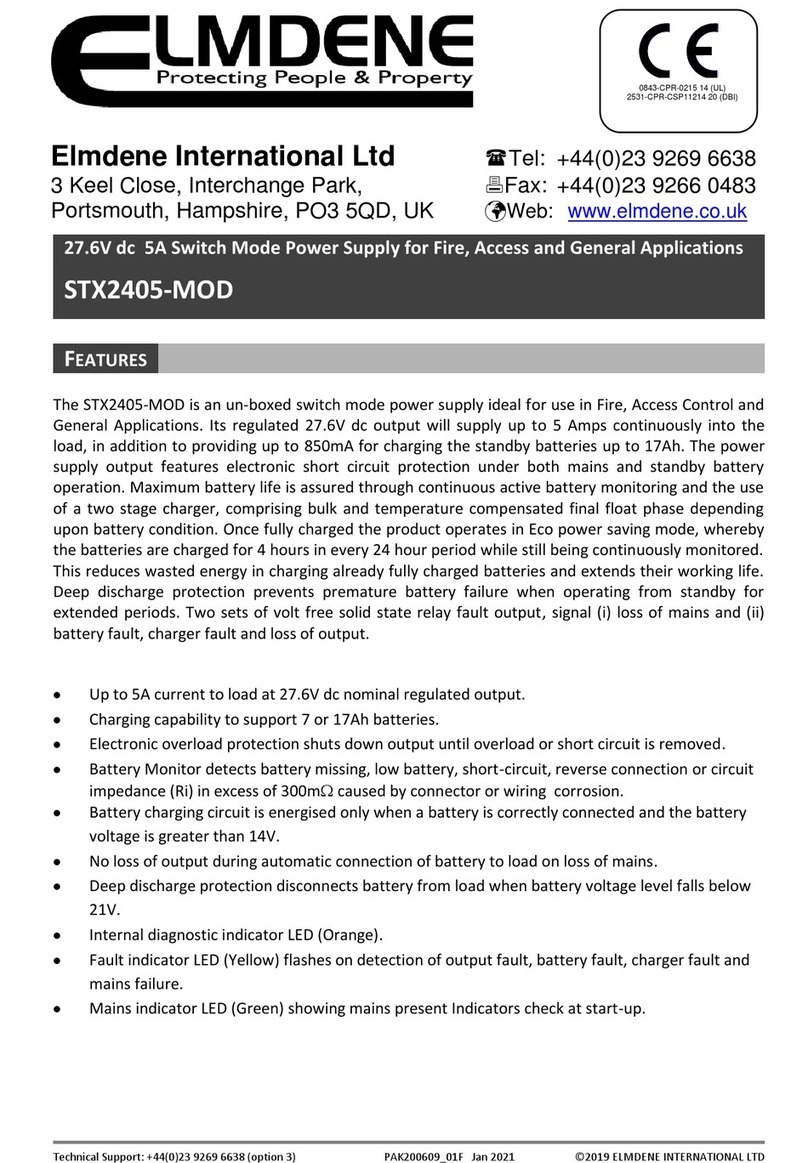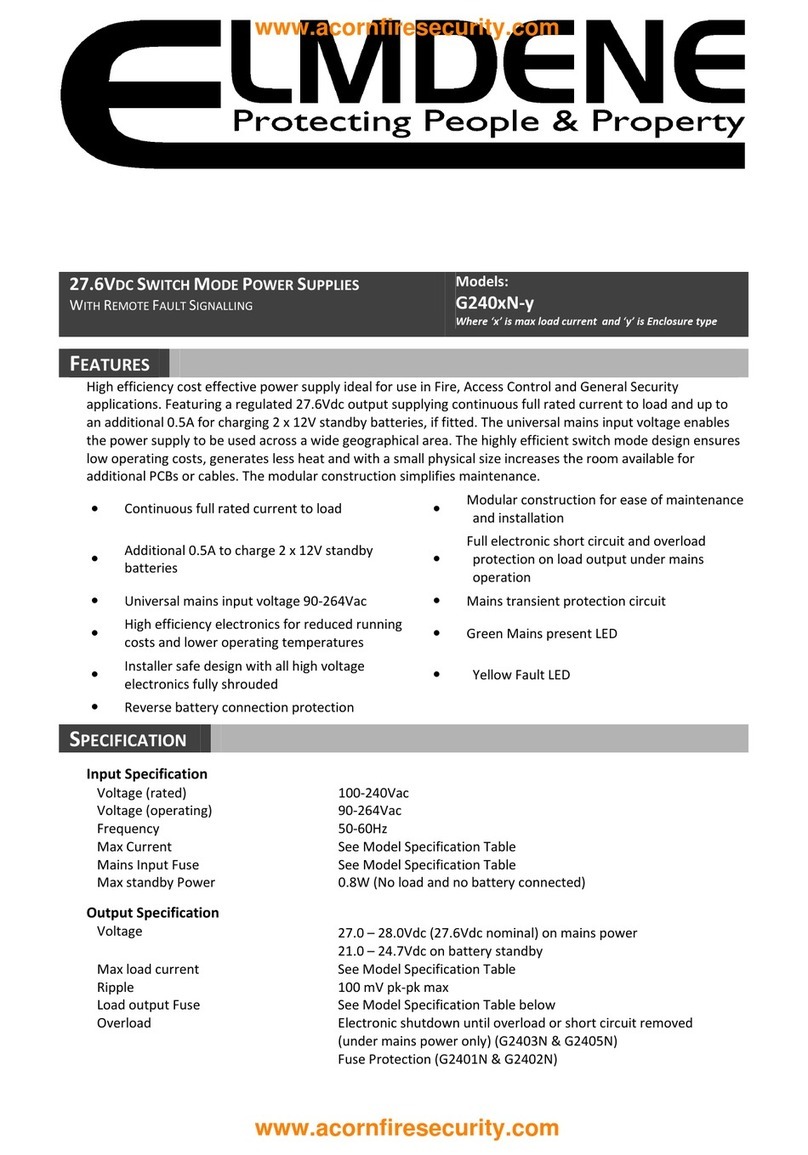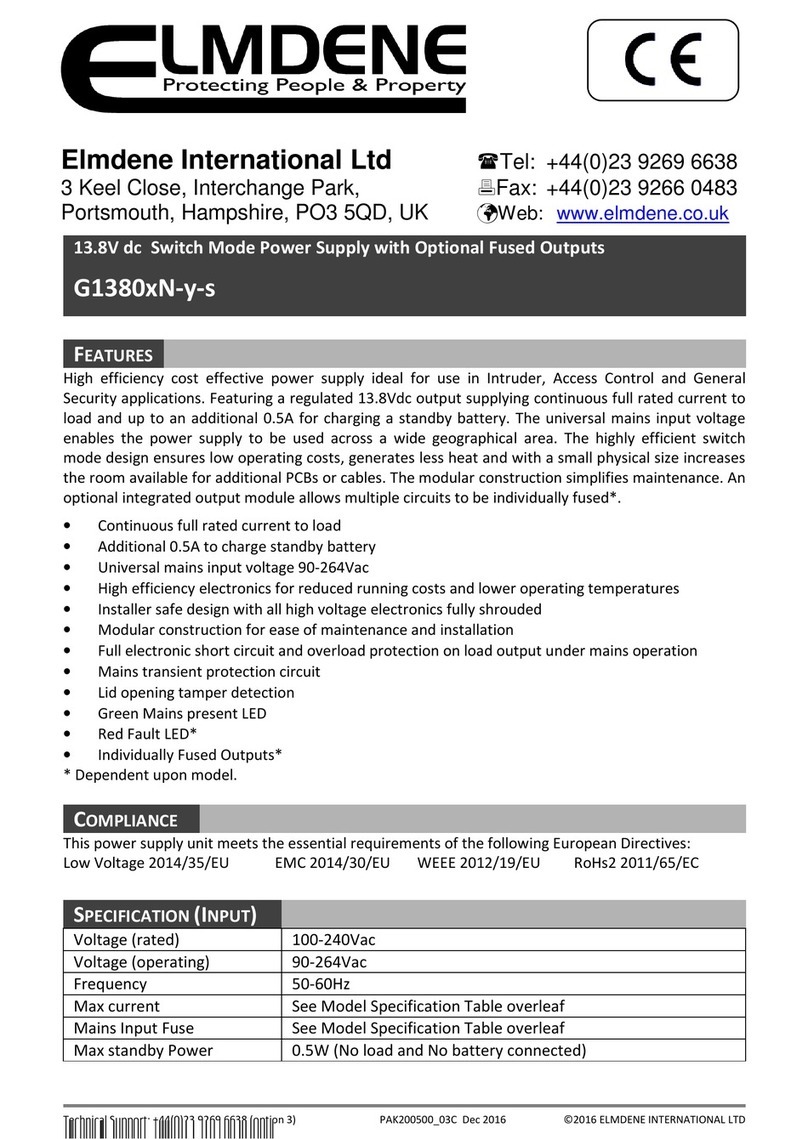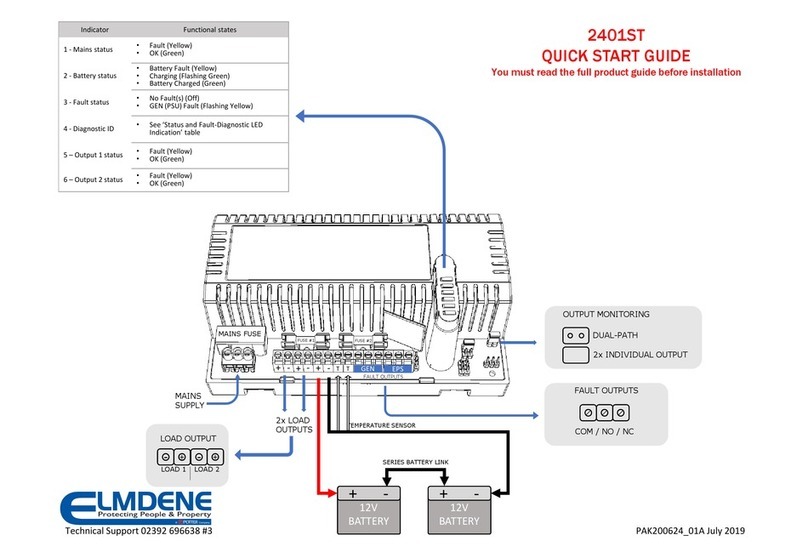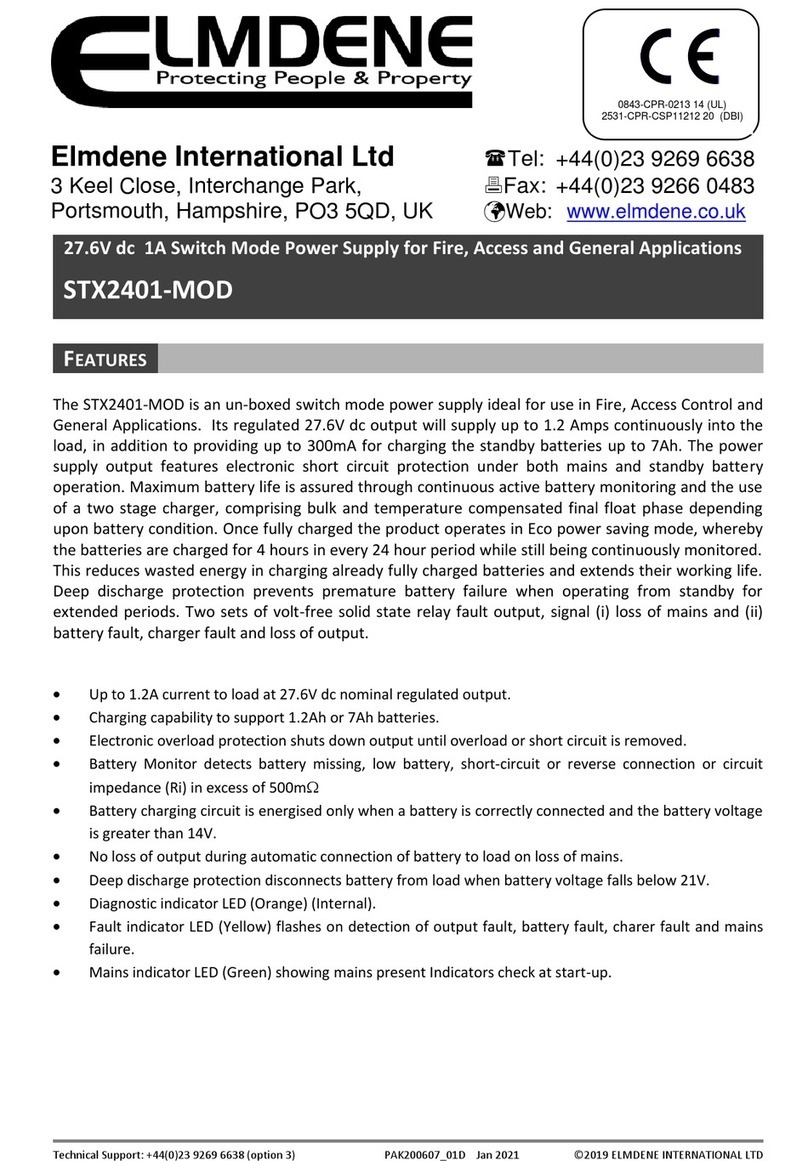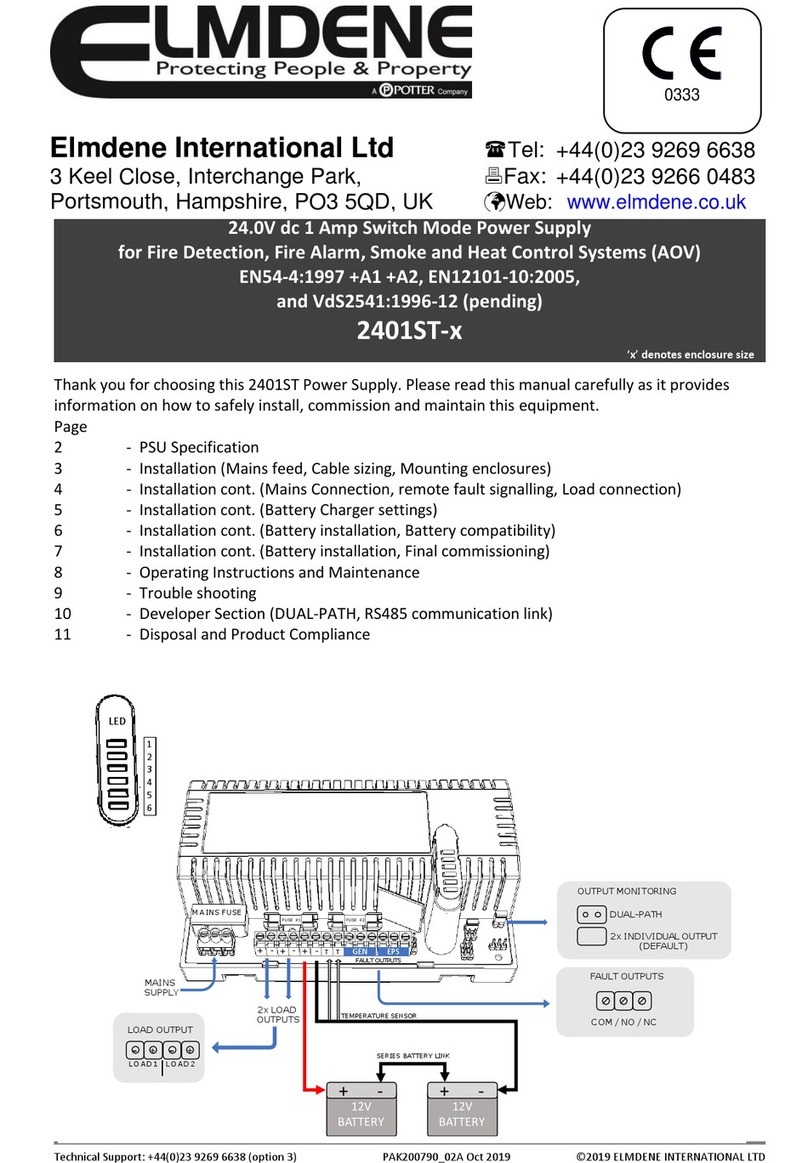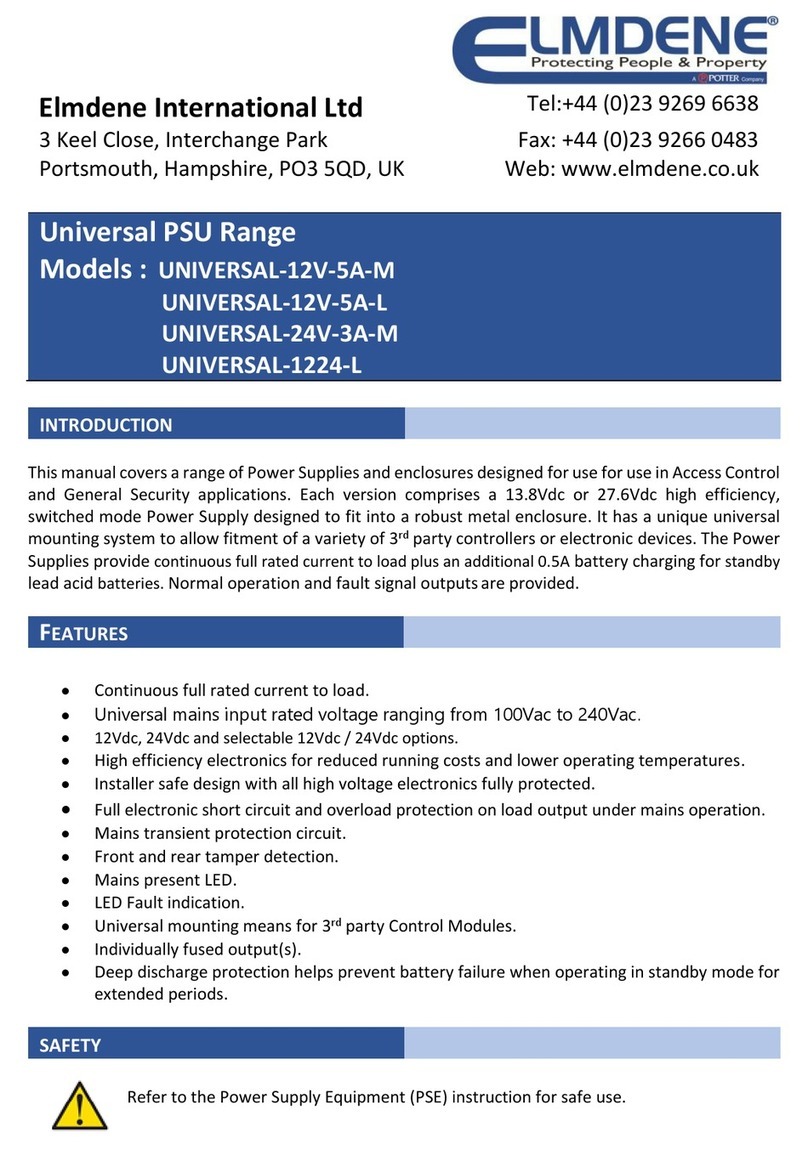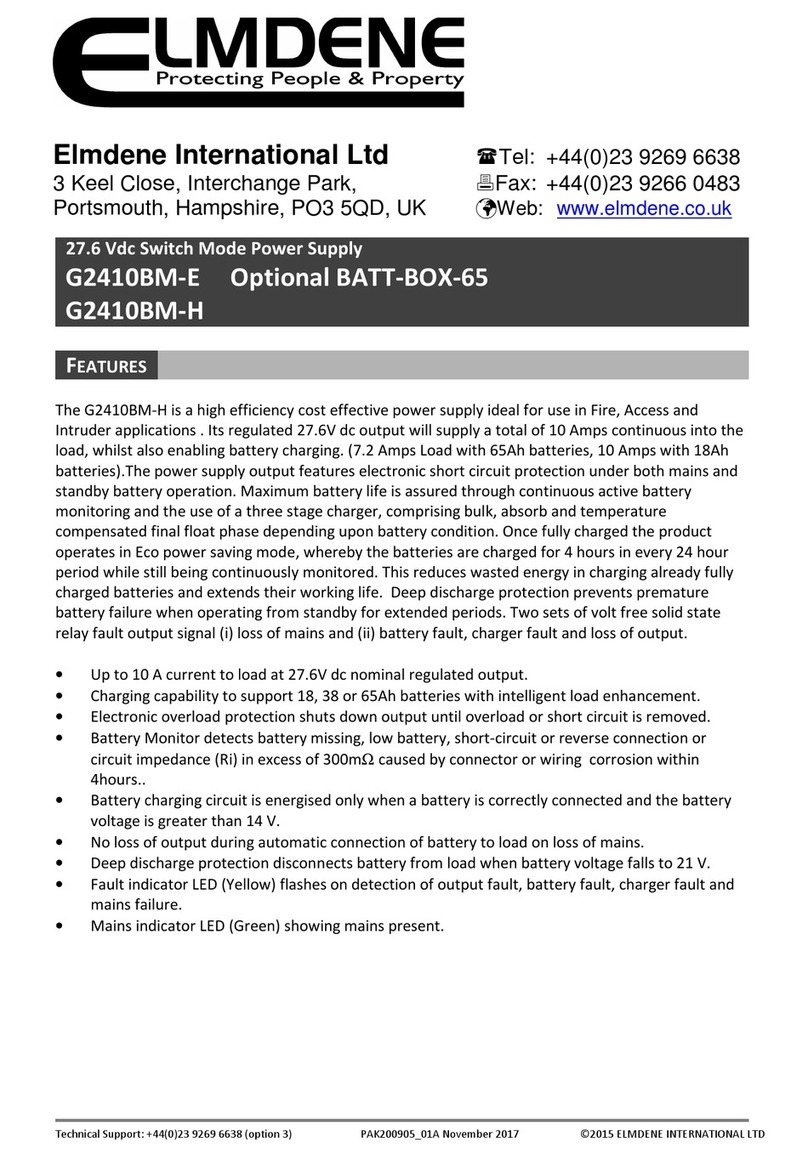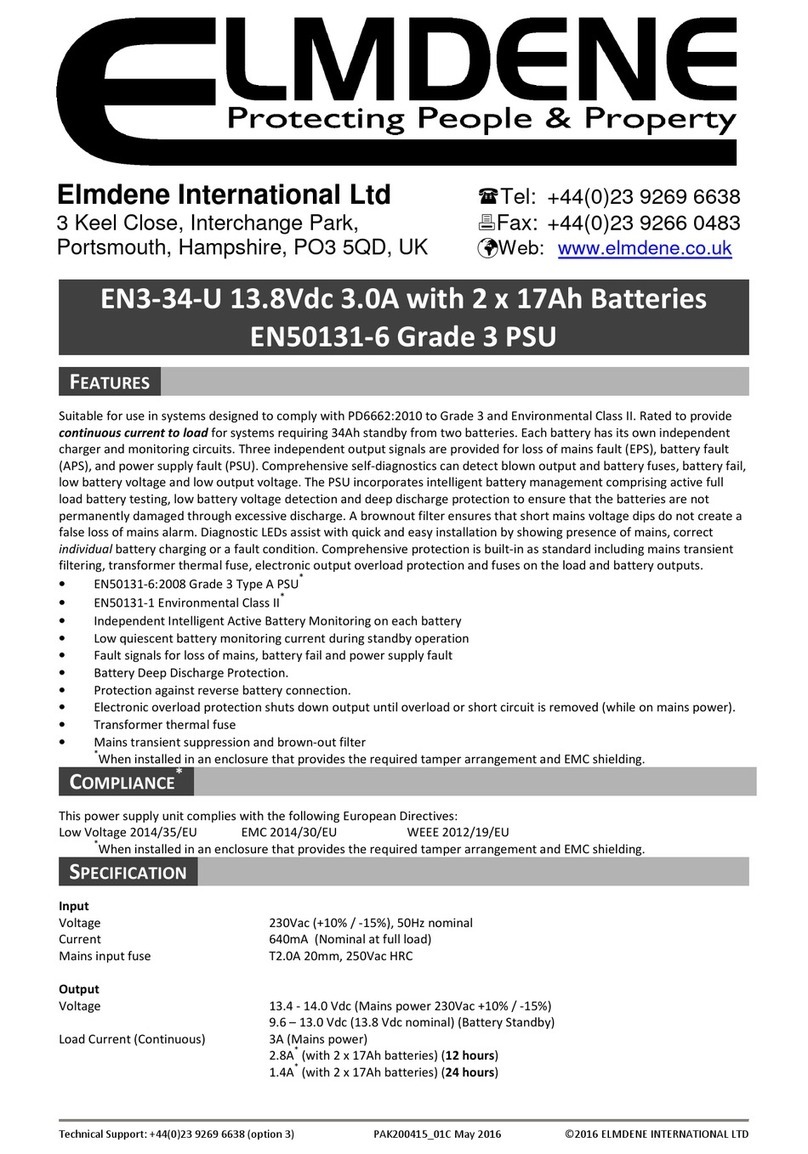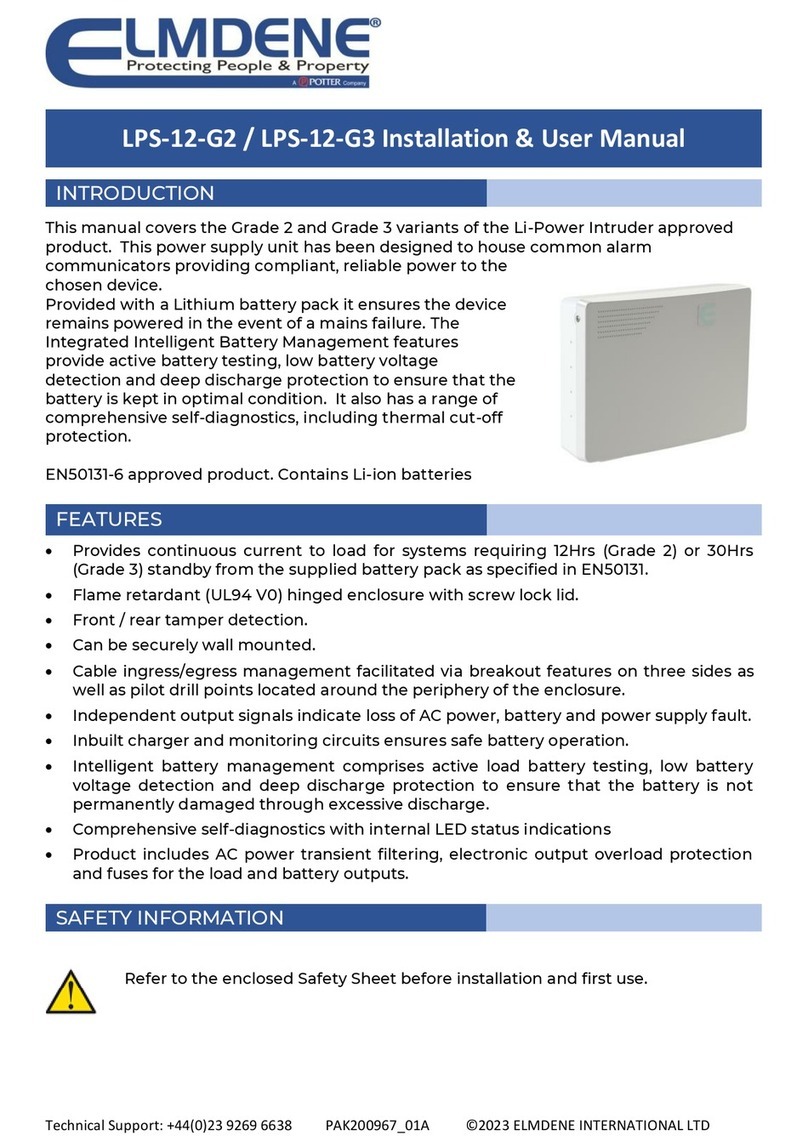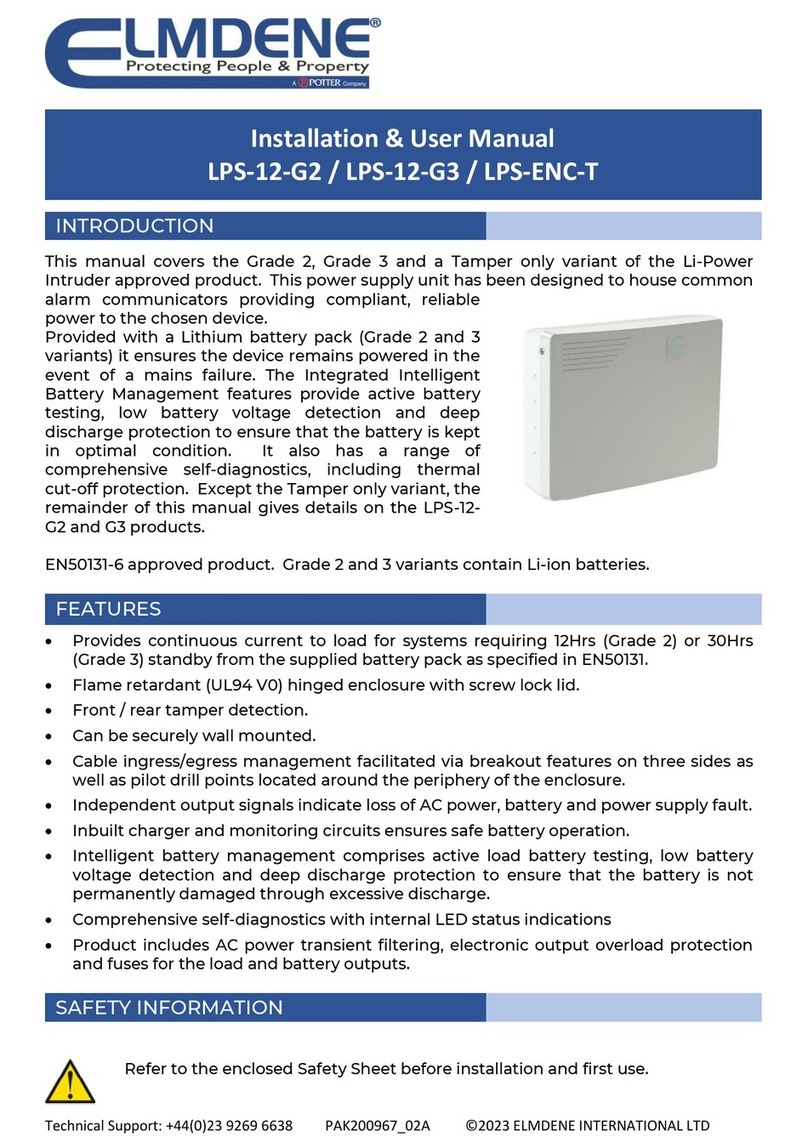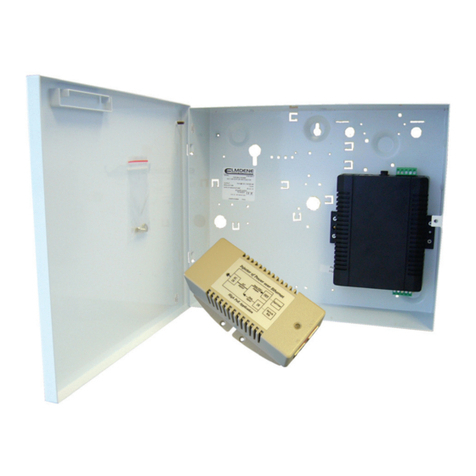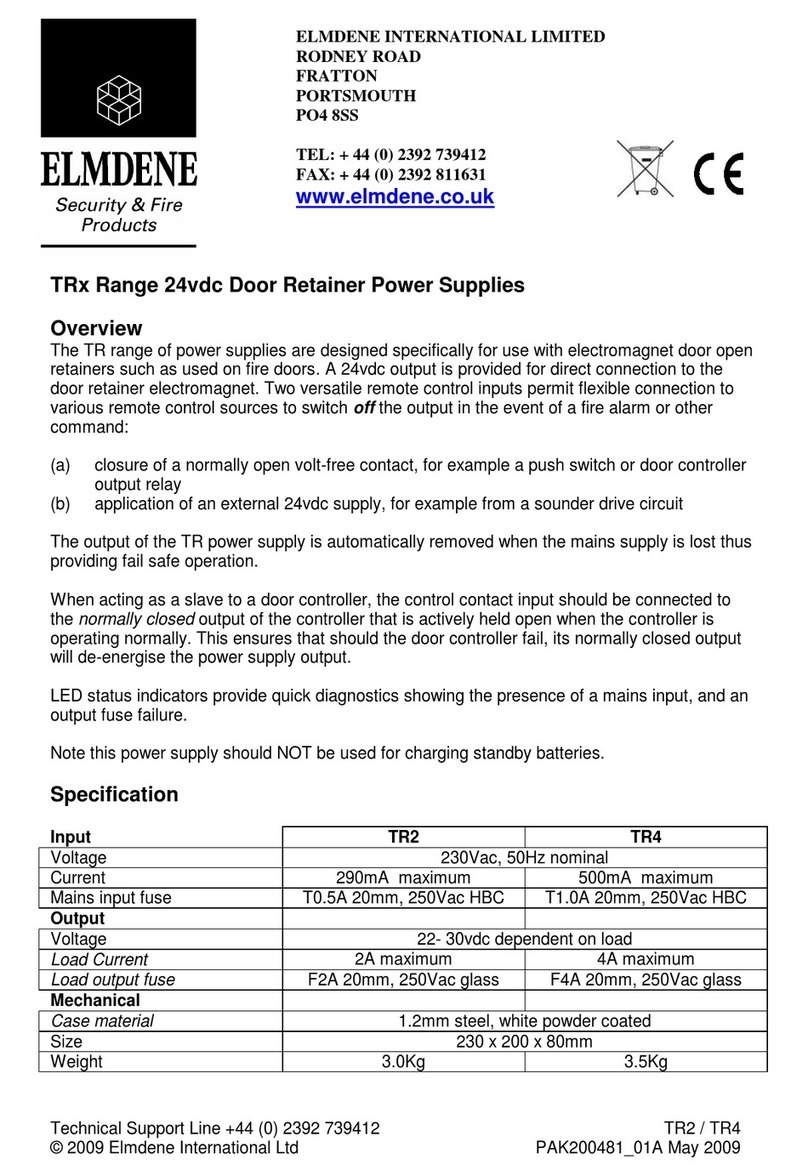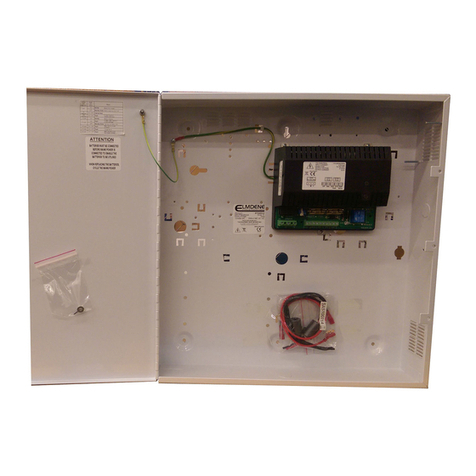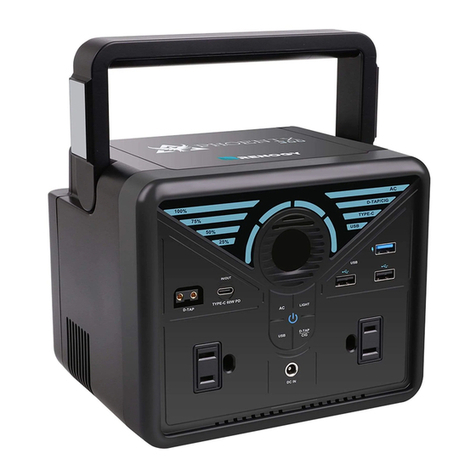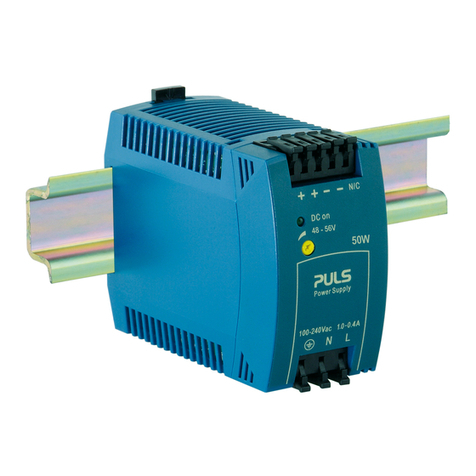
Fault Diagnostic table – Internal - Engineer
Condition Possible Cause Action
OFF
ON
operation
Battery fully charged None
OFF
Mains Lost. No faults present
Battery driving load
Investigate loss of mains
FLASH
CONTINUOUS
ON or OFF
No output
Output fuse blown
Output overload
Output short circuit
fuse
Disconnect output load and
1 PULSE
ON Battery
Charging
Battery charging normally but <
None
2 PULSES
ON
No Battery
Battery disconnected
Battery fuse blown
Battery heavily discharged
Check battery connections
Check battery fuse
Check battery condition
Replace battery if aged
OFF
Standby Mode
Battery almost discharged
Restore mains
3 PULSES
ON or OFF
Battery Fault
High impedance in battery
connection
Check battery connections
for corrosion. Replace
Internal failure of battery charger
5 PULSES
ON or OFF
Battery
Temperature
Probe Fault
Battery temperature monitor
disconnected or damaged
PSU running in Safe Mode
connections and condition
of sensor.
This unit is only suitable for installation as permanently connected equipment. The PSU is NOT SUITABLE for
external installation. This product (PSE) is designed for the use in automatic fire detection and fire alarm systems. If
it is used as power supply equipment for control and indicating equipment, the PSE shall be installed no further than
10cm from the CIE, and close coupled by conduit.
This unit must be fed from a mains power source having a separate (approved) disconnect device and fitted with a
fuse or other over-current protection device rated at 5 A maximum. Ensure that the disconnect device used has
appropriate earth fault protection to the applicable standard.
Where the PSU is used to provide power to a fire alarm circuit, the mains isolation and disconnect device should be
provided solely for this purpose and be suitably marked “FIRE ALARM – DO NOT TURN OFF”. All cabling should meet
national and local fire system installation regulations, e.g. FP200 type cable for high integrity installations.
Where the PSU is used for other applications, it should be installed according to all relevant safety regulations
applicable to that application.
Where the GEN PSU Fault and EPS Fault outputs are used, they should only be connected to circuits having voltages
less than 60 Vdc.
Cable Sizing
1) Mains input cable must be to the applicable standard with a 5 A or greater current capacity, i.e. 0.75 mm2
nominal conductor area, having a minimum operating voltage of 300/500Vac.
2) The low voltage output cable must be sized to carry the rated load current to the devices connected to the
PSU.
3) Mains input and low voltage output cables should be routed to use different entry / exit holes in the case.
Bushes should be used to protect cable sheaths from chafing. Ensure that these bushes are correctly sized
(i.e. close fitting with respect to cable sizing). Note that the bushes should meet a minimum flammability
specification of UL94 HB.
4) All cabling should be securely fastened in position using a cable tie through the saddles provided.
www.acornfiresecurity.com
www.acornfiresecurity.com
